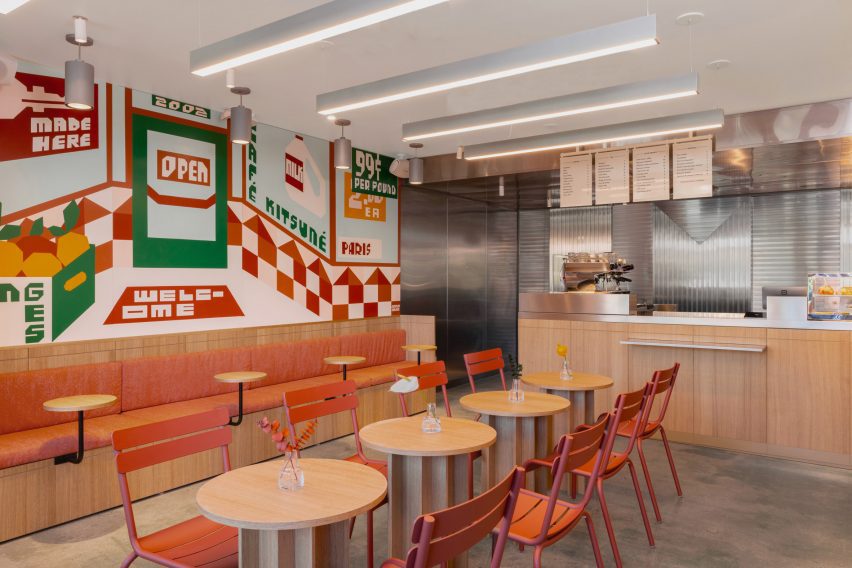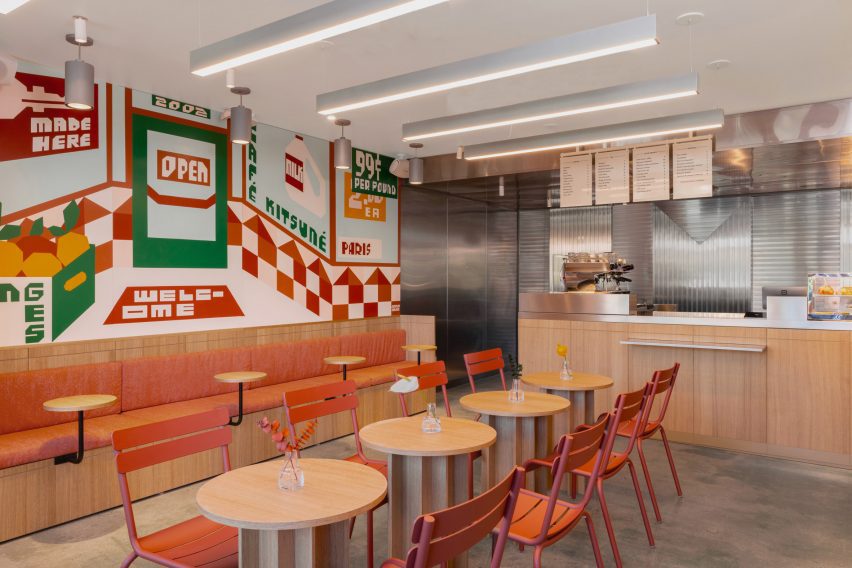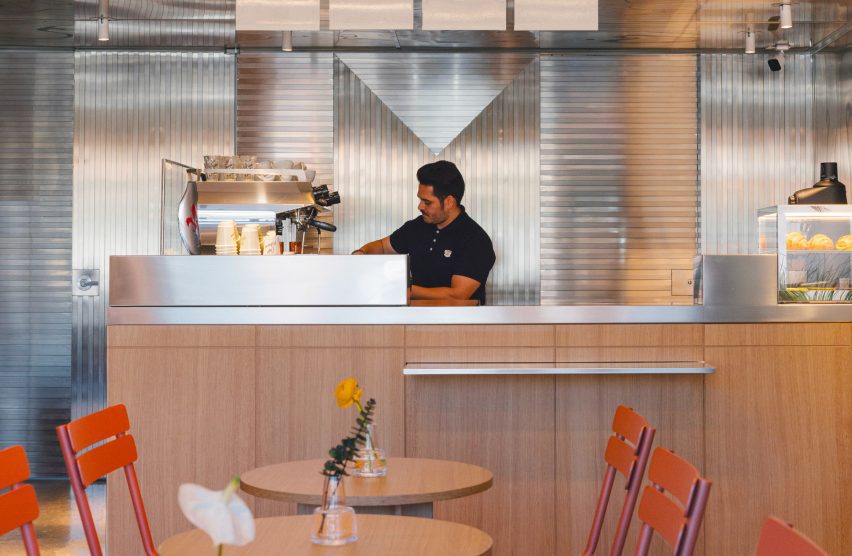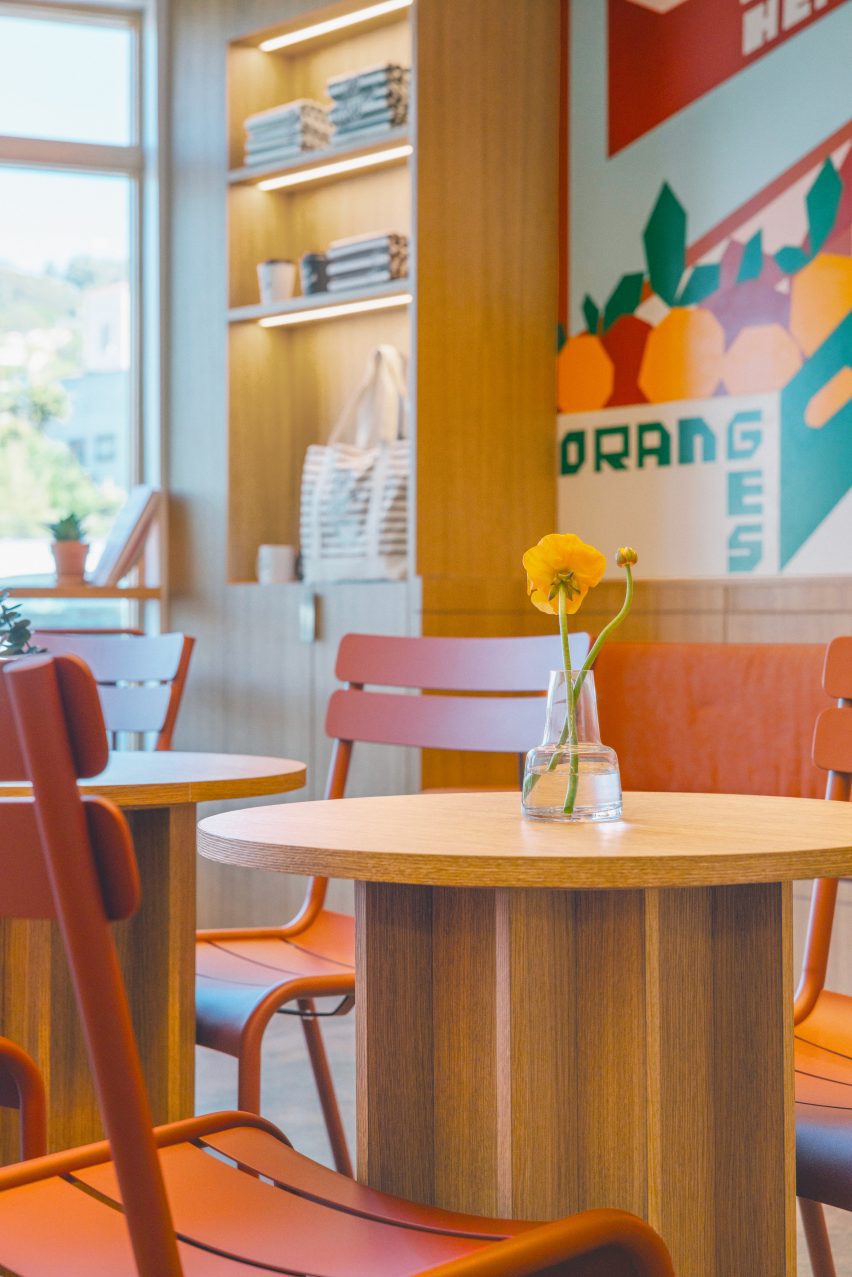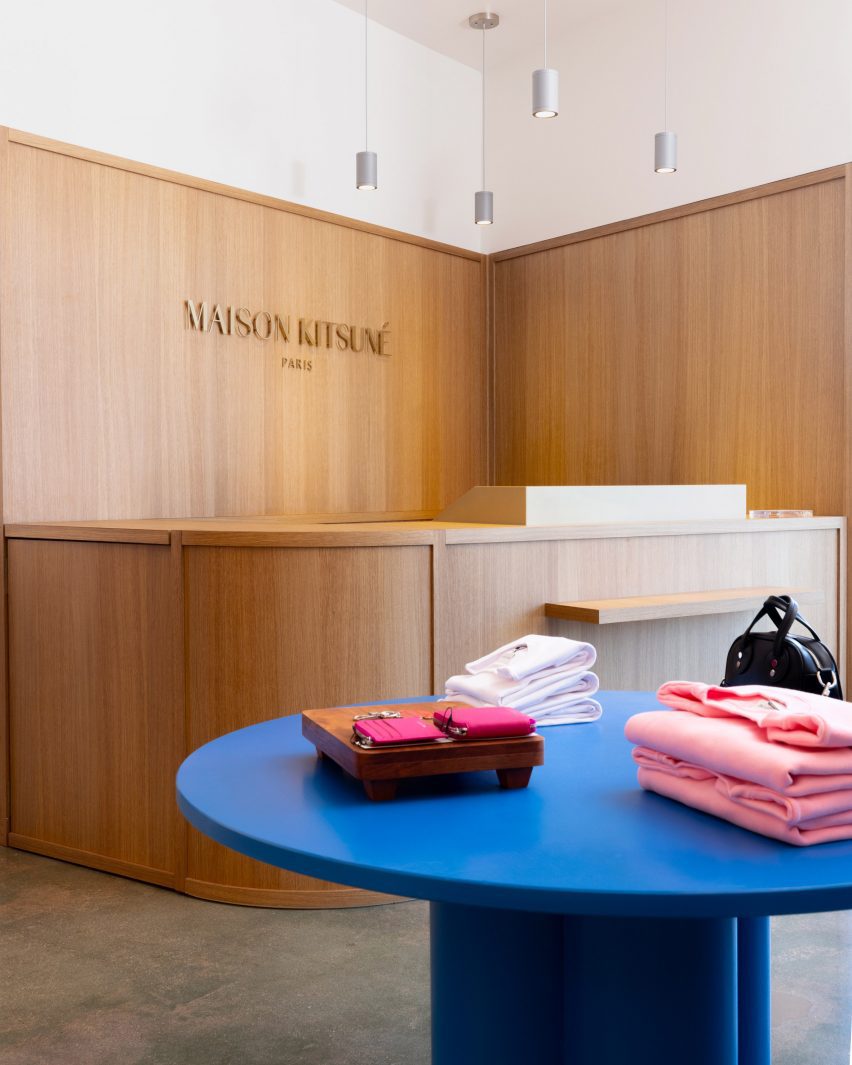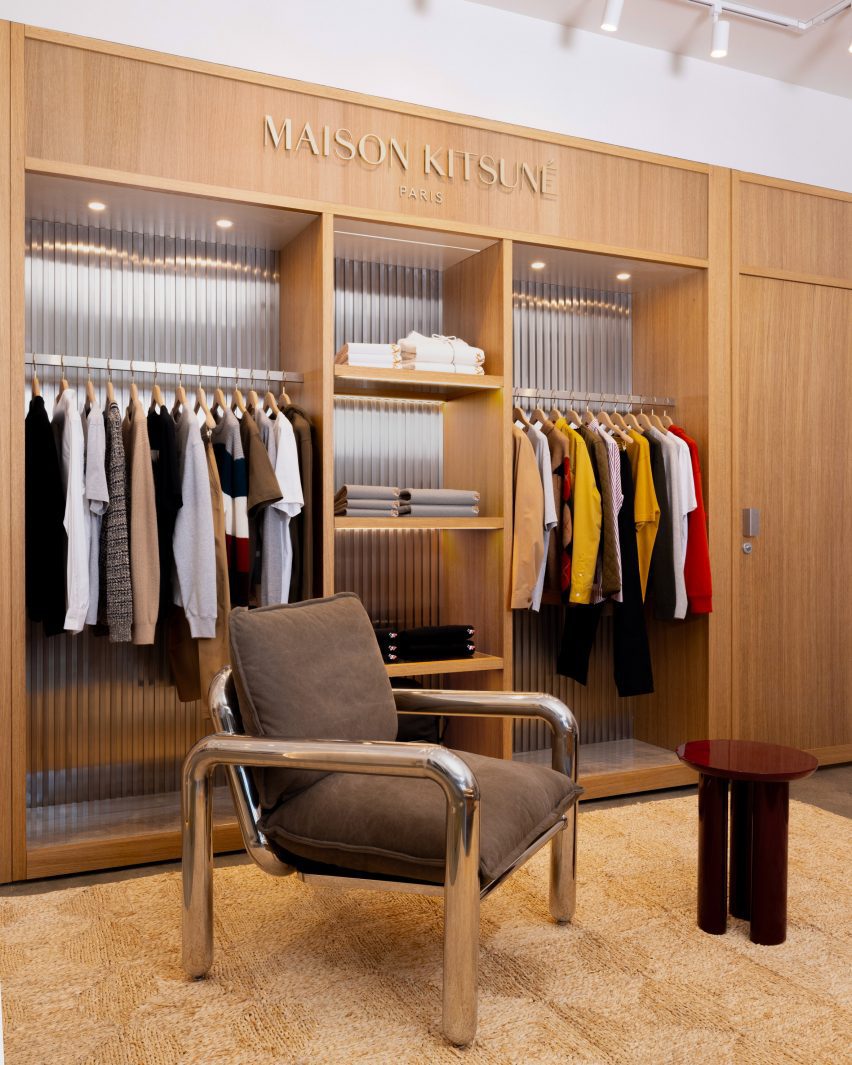Oka Fogo restaurants in Paris feature murals by Florence Bamberger
Architect Arnaud Behzadi and artist Florence Bamberger have combined French and Brazilian influences to create interiors for a pair of adjoining restaurants.
Located in Paris’ 17th arrondissement, Oka Fogo is the latest eatery from Raphael Rego, a Michelin-starred chef who is originally from Rio de Janeiro.
Behzadi designed interiors that aim to capture the spirit of Rego’s cuisine, while Bamberger painted wall and ceiling murals that bring an extra spark of energy.
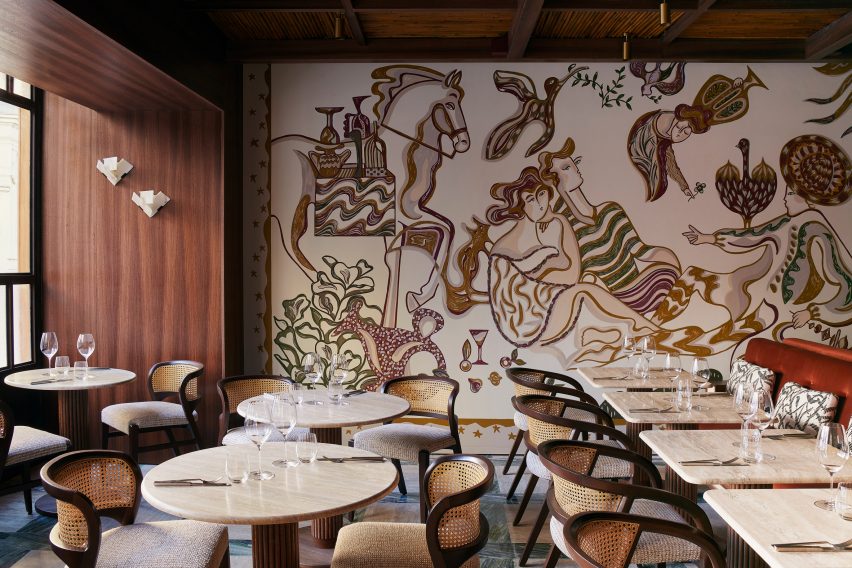

The two restaurants each have a distinct character.
Oka, which means “house” in the language of Brazil’s indigenous Tupi people, is an intimate 16-seat dinner-service restaurant with the feel of a grand yet cosy lounge.
The neighbouring Fogo, which translates as “fire”, is a less formal space that offers a sense of dining al fresco. With an adjoining bar and grill, this 40-seat space is open for lunch and dinner.
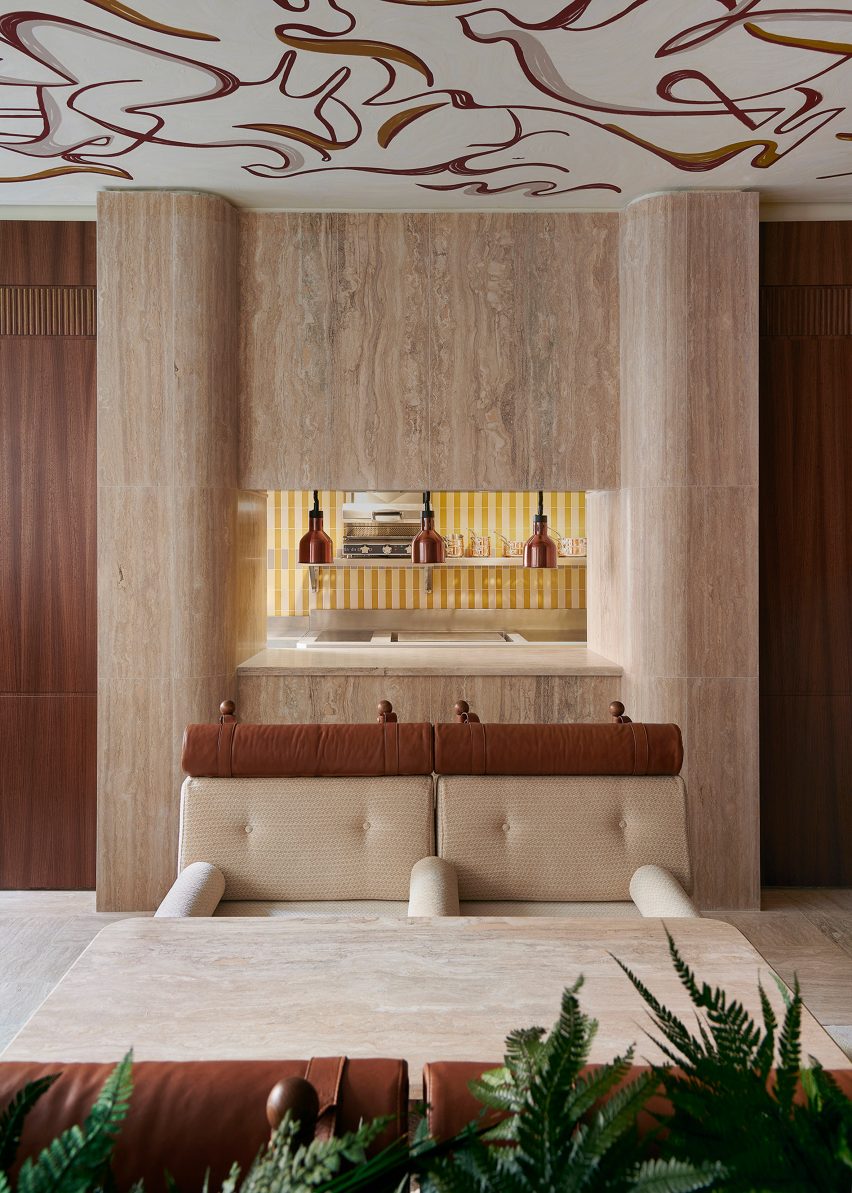

“I approached the project as a journey through a house,” Behzadi told Dezeen.
“I see Oka as a prestigious living room and Fogo as an interior garden.”
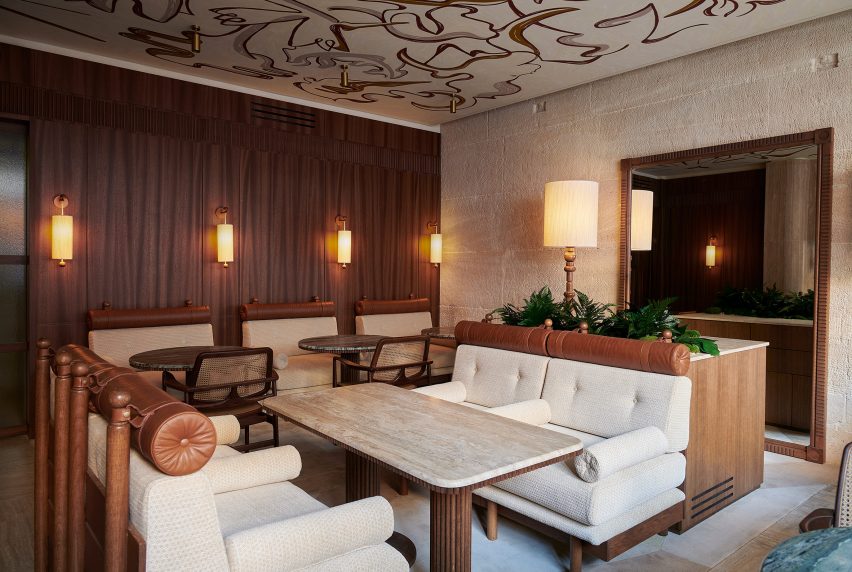

Bamberger’s expressive murals reinforce this approach.
In Fogo, she has painted a reinterpretation of the Édouard Manet artwork, Le Déjeuner sur l’Herbe. The work takes cues from the free-flowing lines of Brazilian artist José Francisco Borgès, resulting in a vibrant style.
The Oka mural features on the ceiling rather than a wall. This more abstract work is based on Brazil’s flora and fauna, along with objects that represent the nation’s culture.
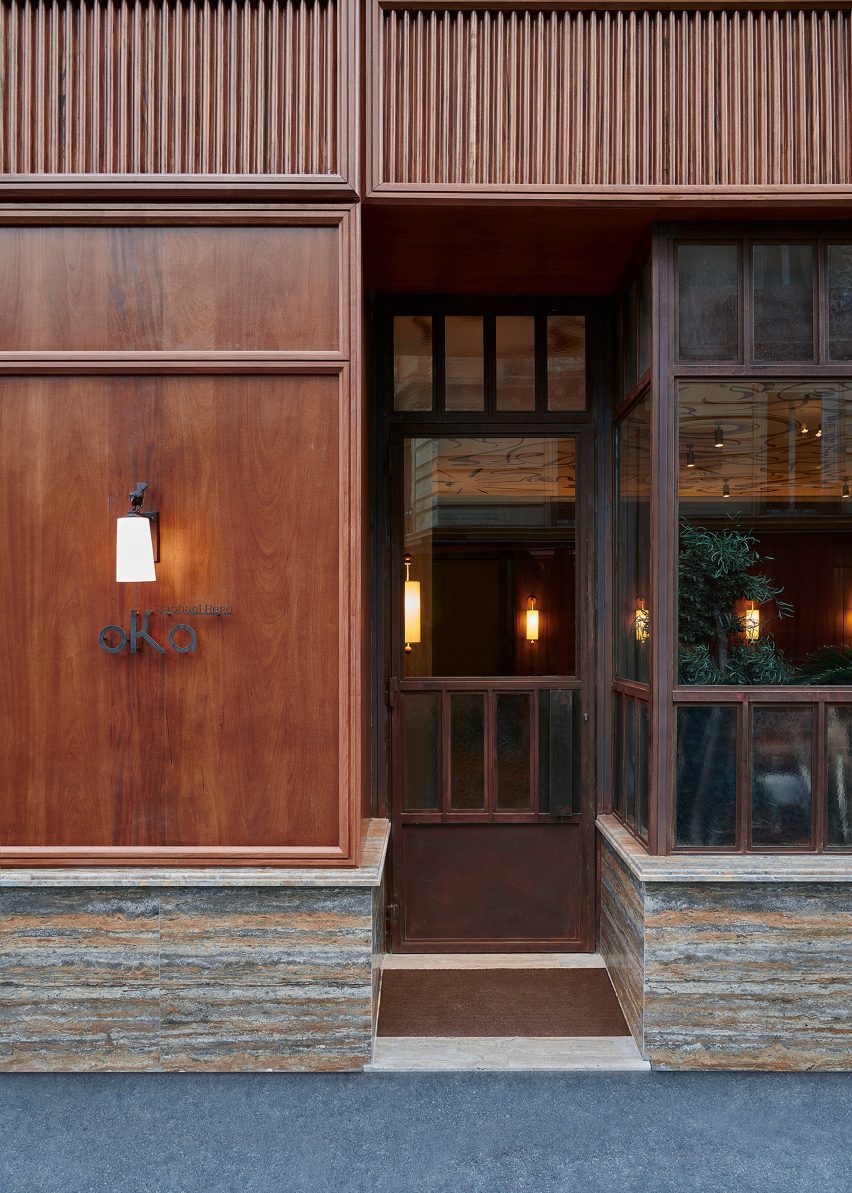

Behzadi chose richly toned woods and highly textural marbles for the interior design palette, in a nod to materials favoured by Brazil’s prolific mid-century designers.
This partnering of stone and wood begins with the facade, where panels of Jatoba wood from the Amazon sit above a plinth of striated Iranian marble.
“I decided to interpret a classical style for the storefront,” said Behzadi.
“It’s a very Parisian approach, using an exotic material to start evoking the interior that you will discover inside.”
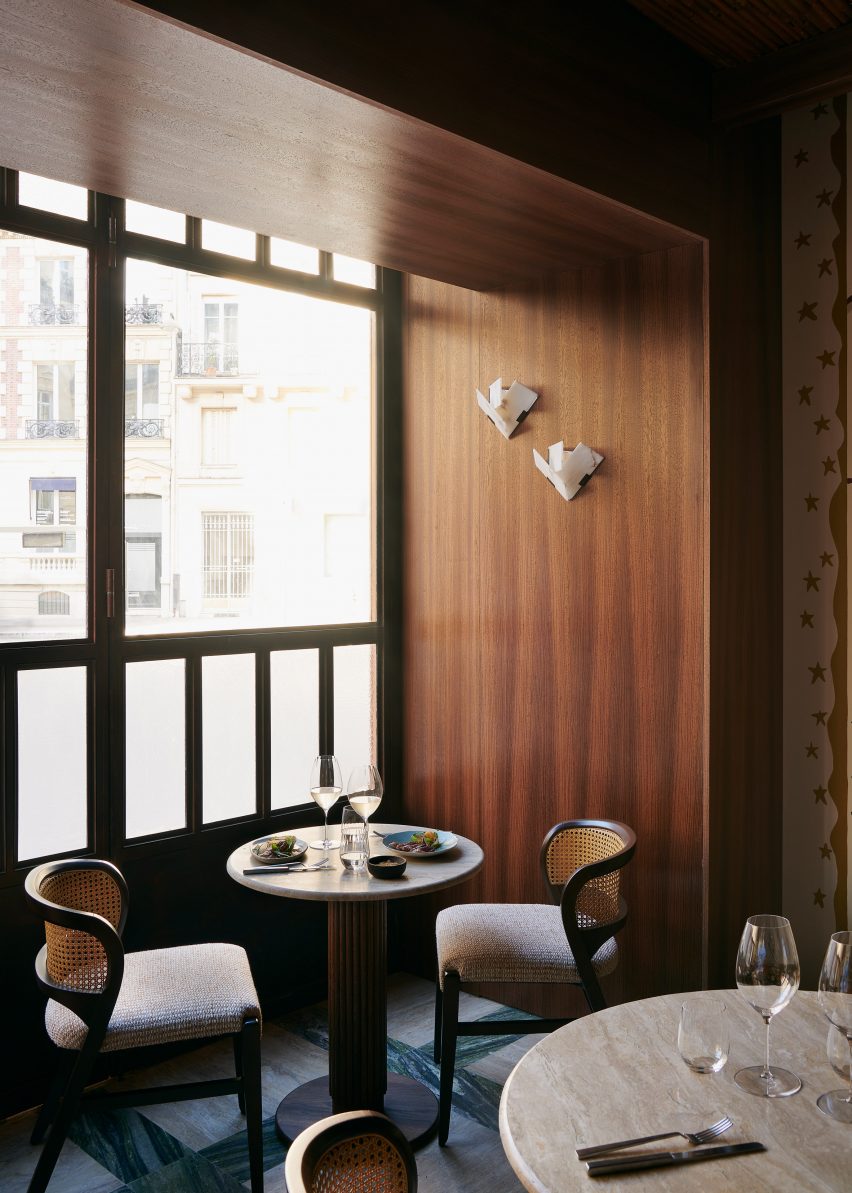

Inside, decorative wooden furniture and joinery are accompanied by a mix of different stones, including white travertine and various green-toned marbles.
Other eye-catching details include sculptural wall lights by Behzadi’s former business partner, designer Cathy Crinon, and chairs by the late Brazilian designer Sergio Rodrigues.
“There is a clear Brazilian inspiration,” added Behzadi.
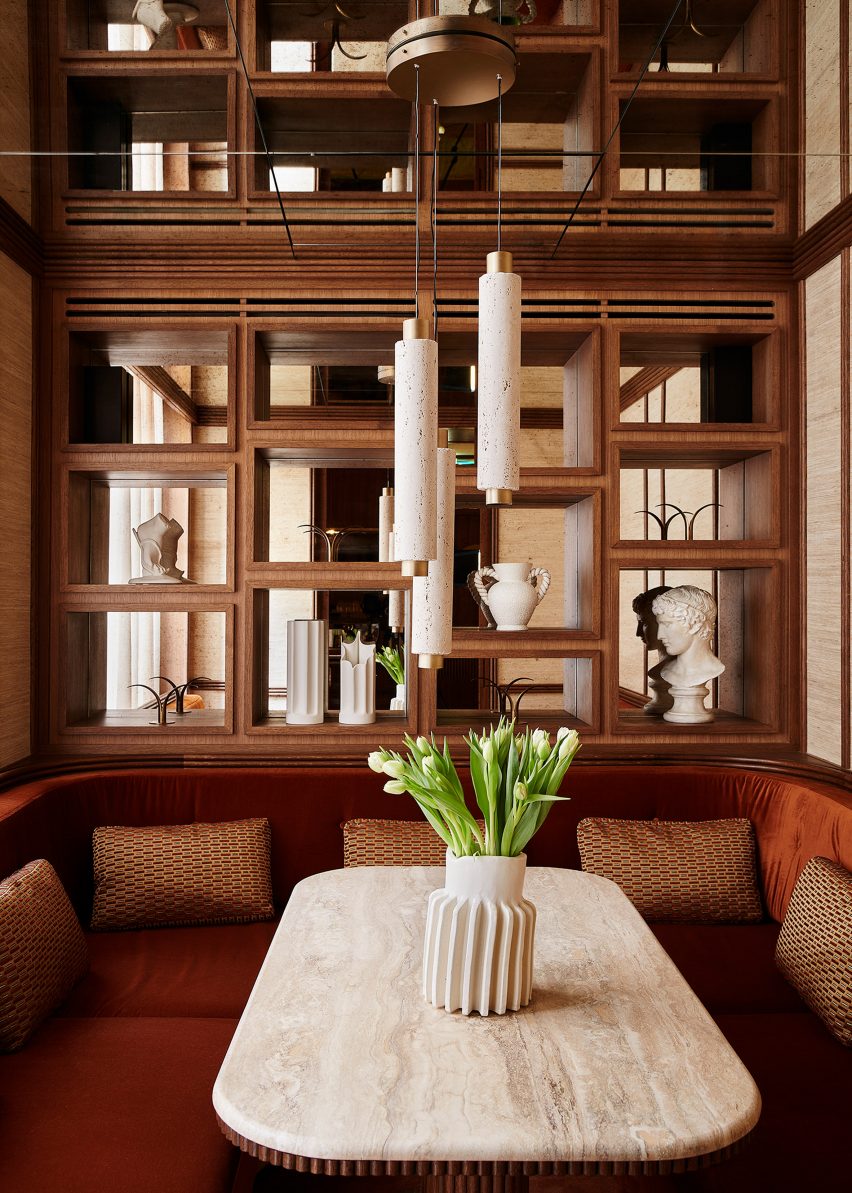

The venue also includes an alcove dining space with room for six, featuring a mirrored ceiling and curved banquette in red velvet, and a wine and champagne tasting room with a vaulted ceiling.
Oka Fogo opened earlier this month. Other recent openings in Paris include Moët Hennessy’s Cravan cocktail bar and oyster bar Citrons et Huîtres.
The photography is by Claire Israel.

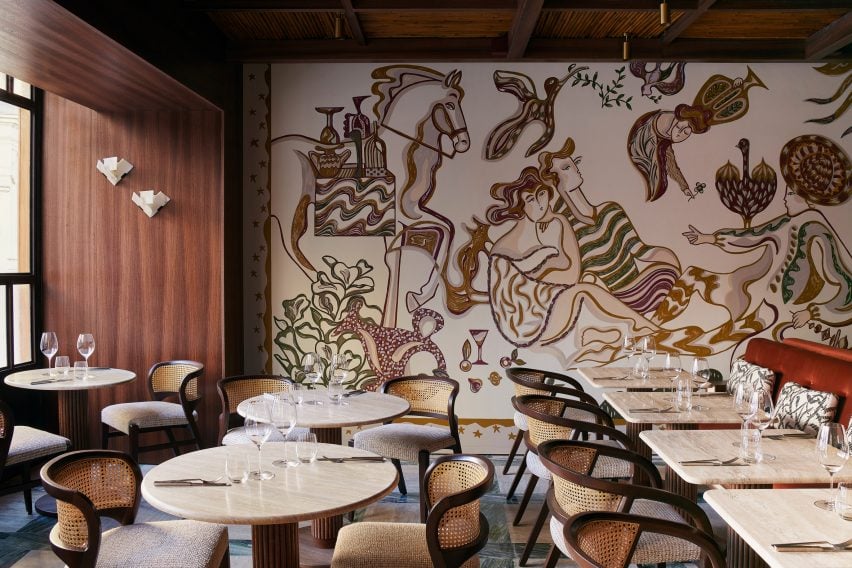
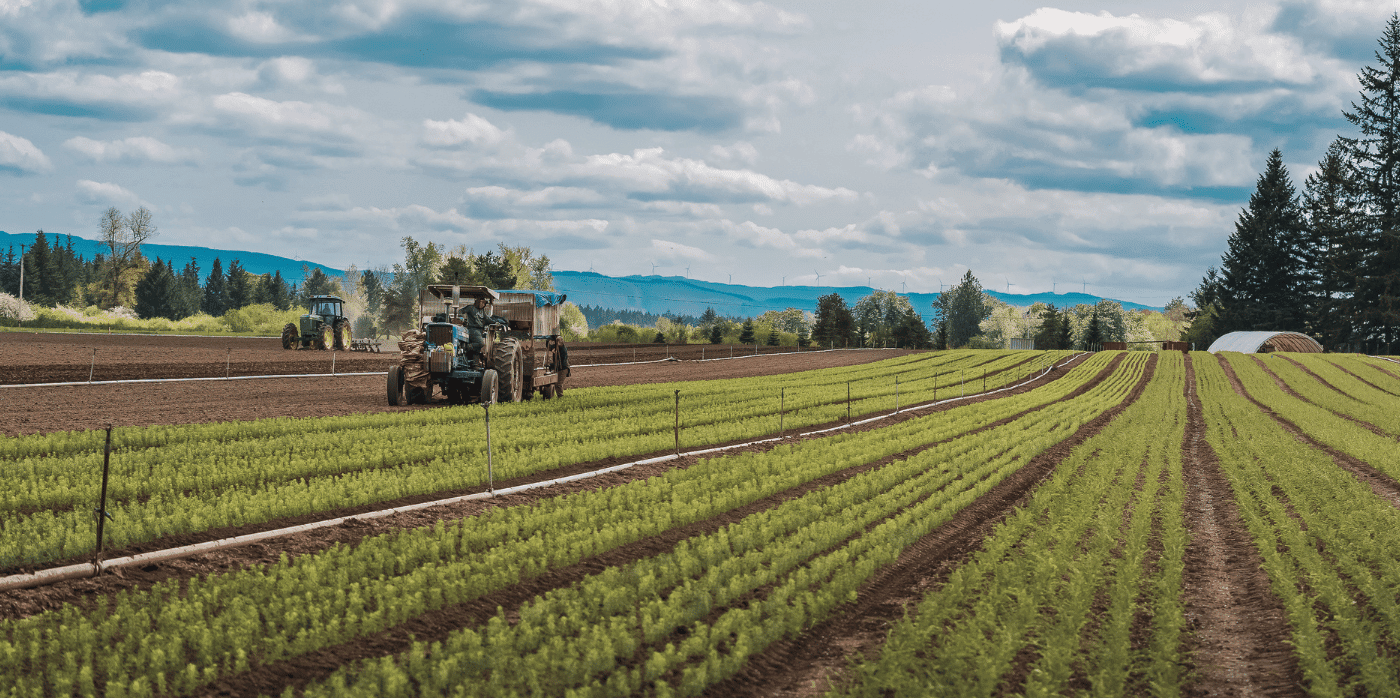

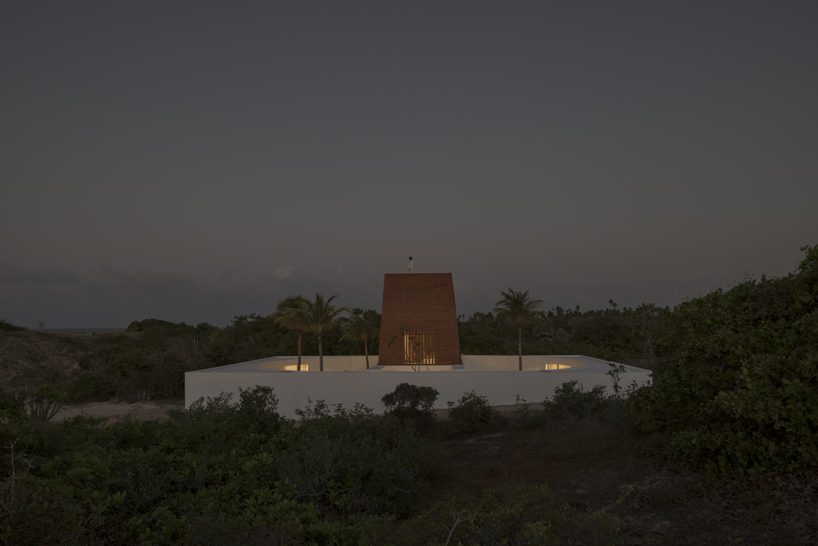
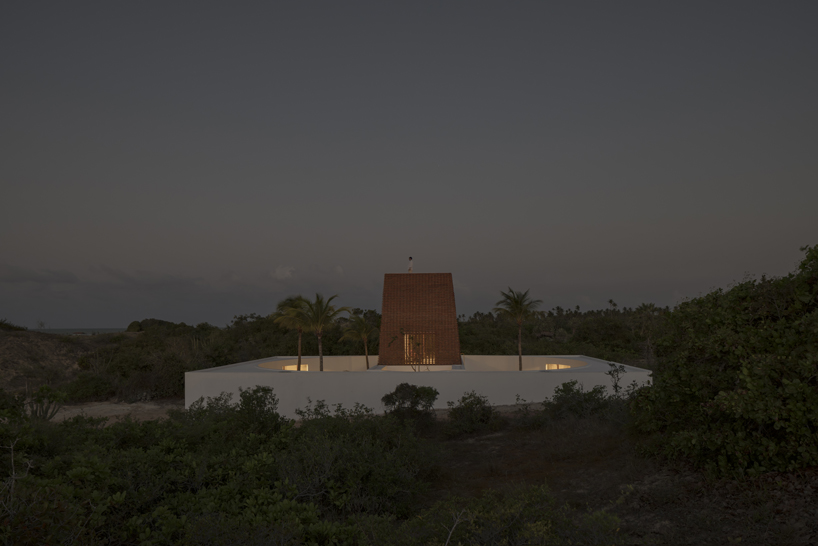
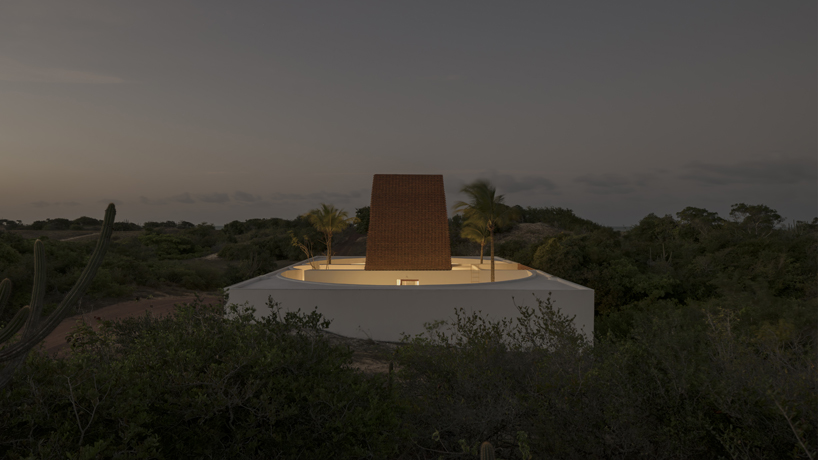
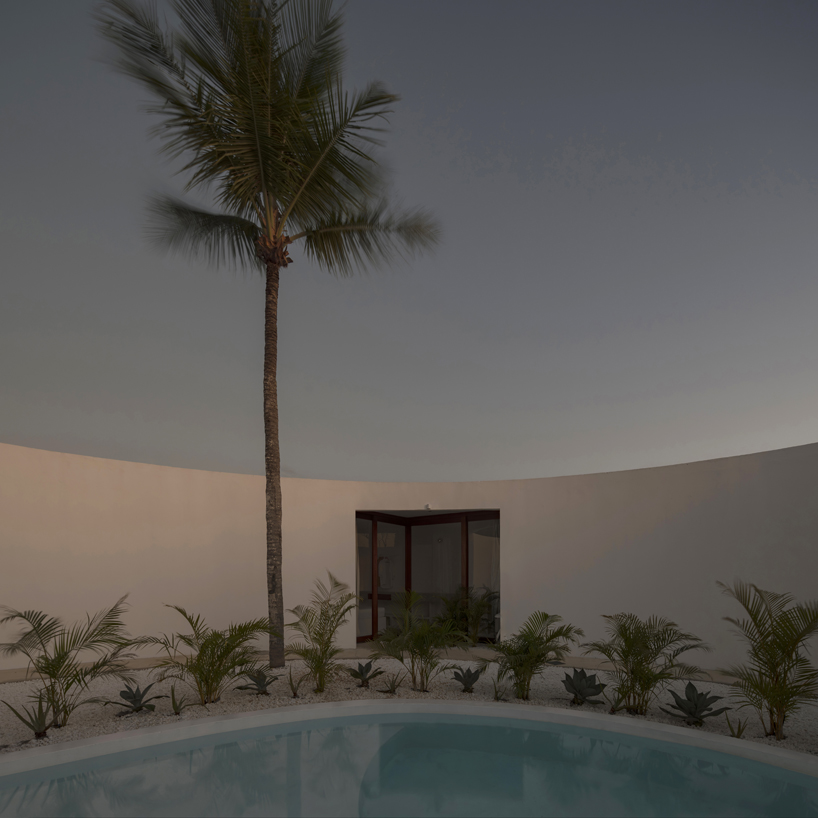
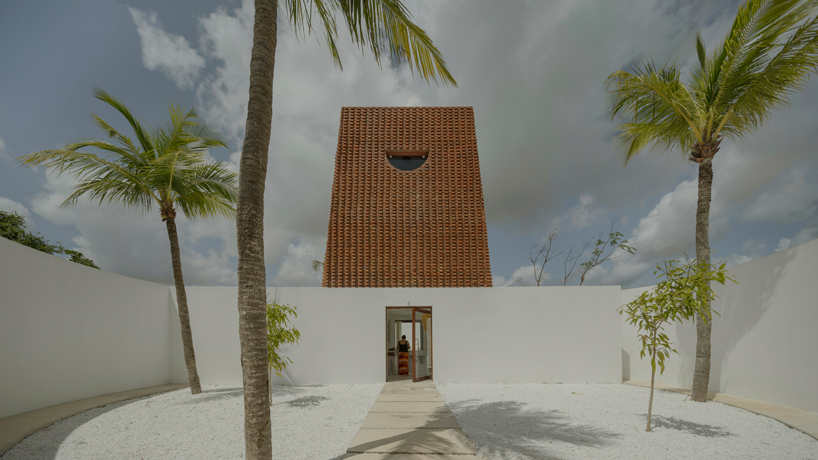
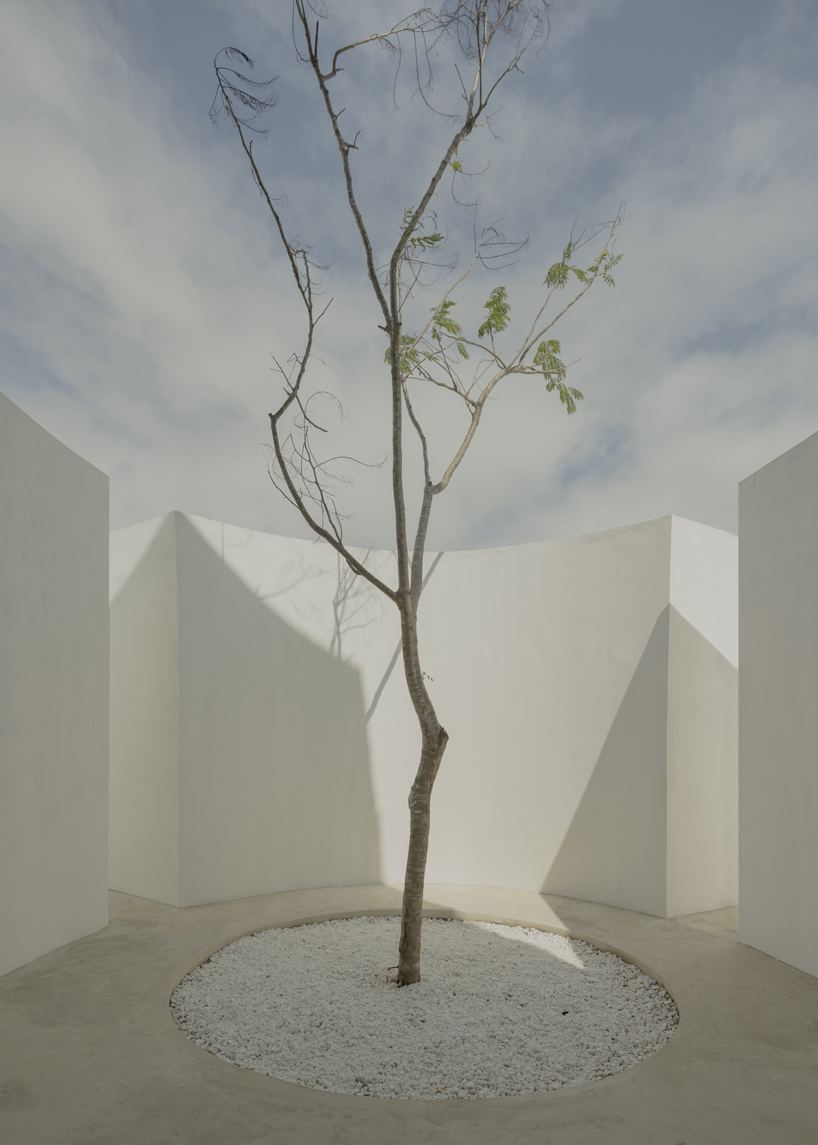
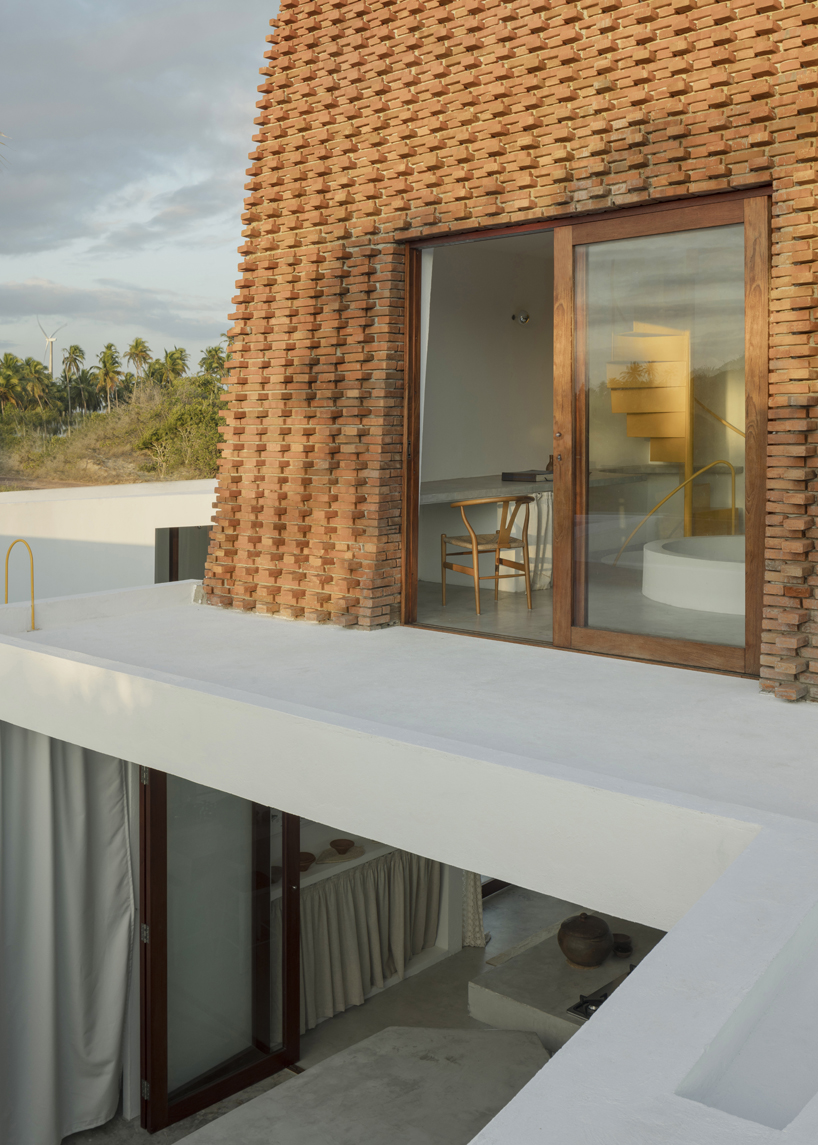
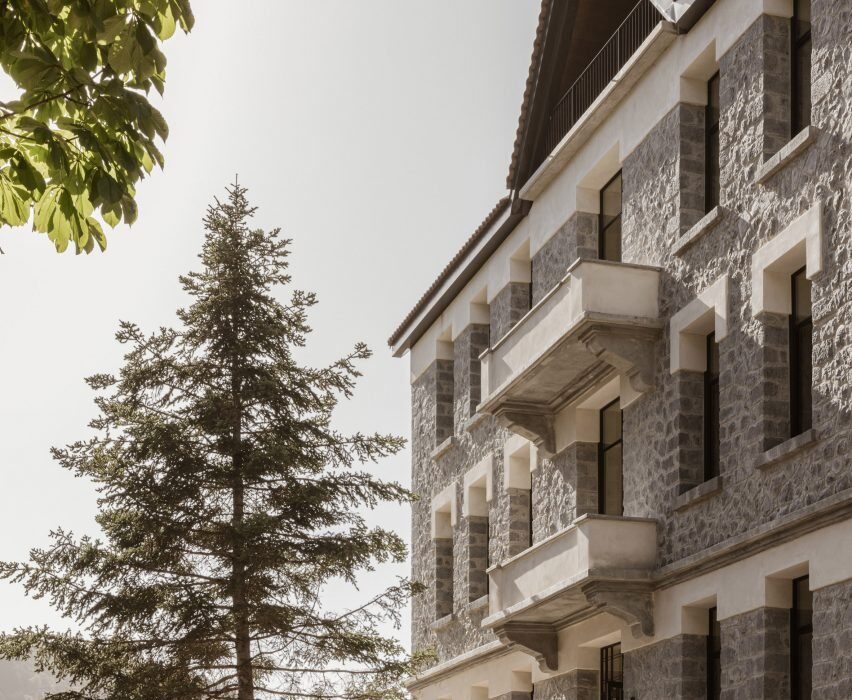
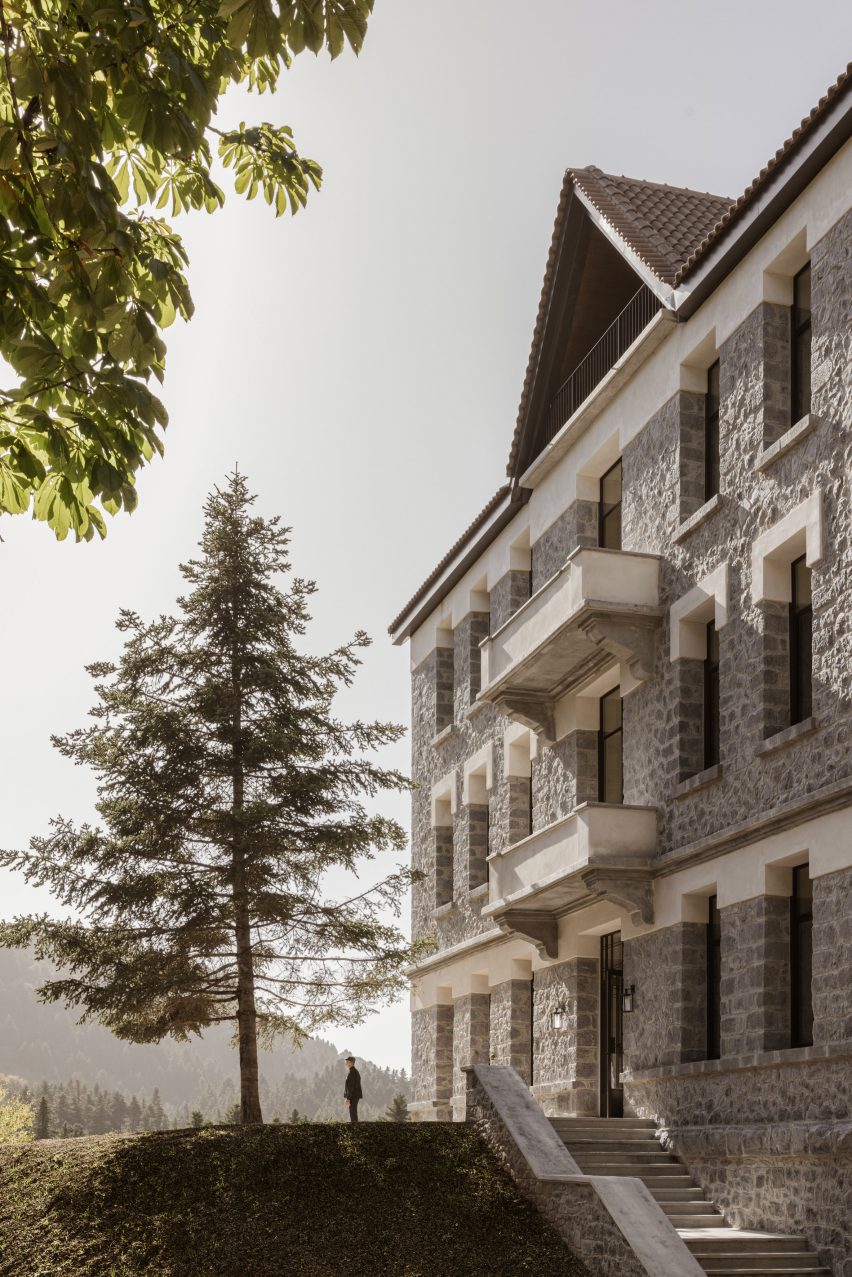
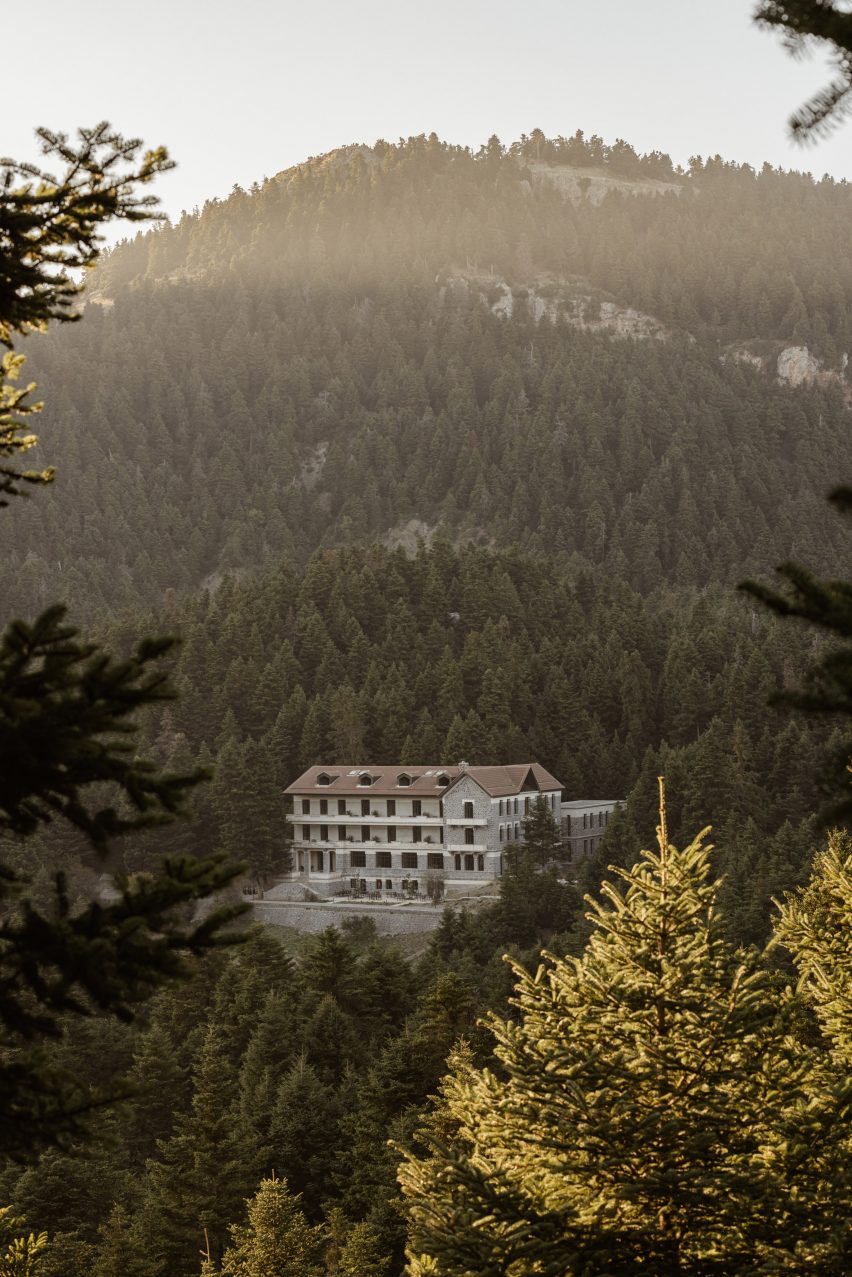
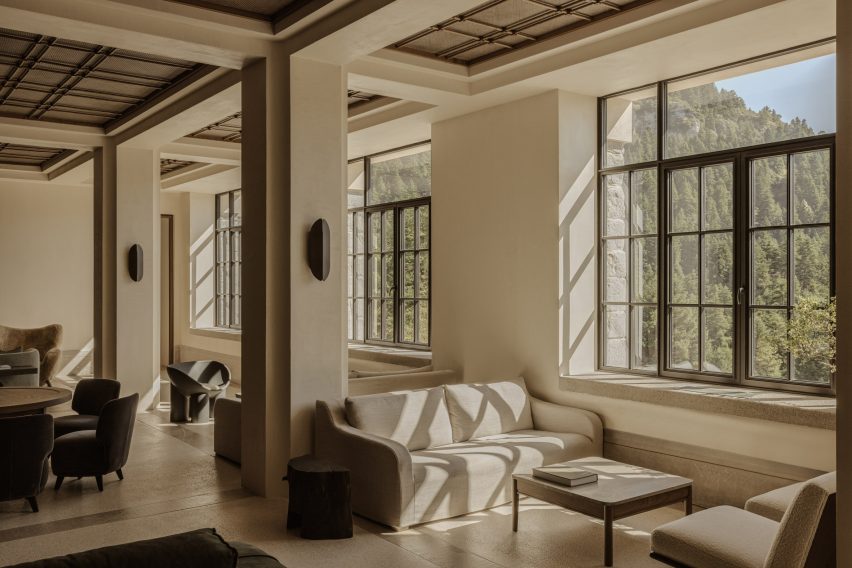
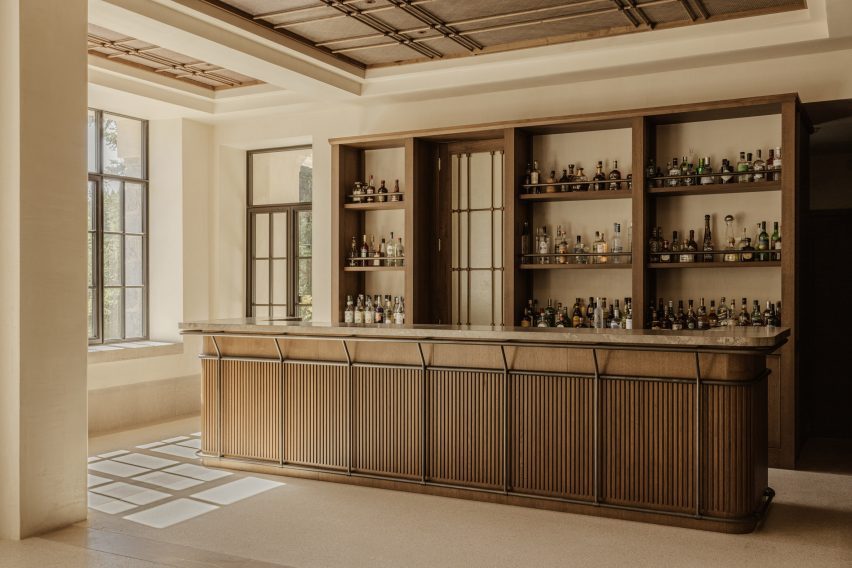
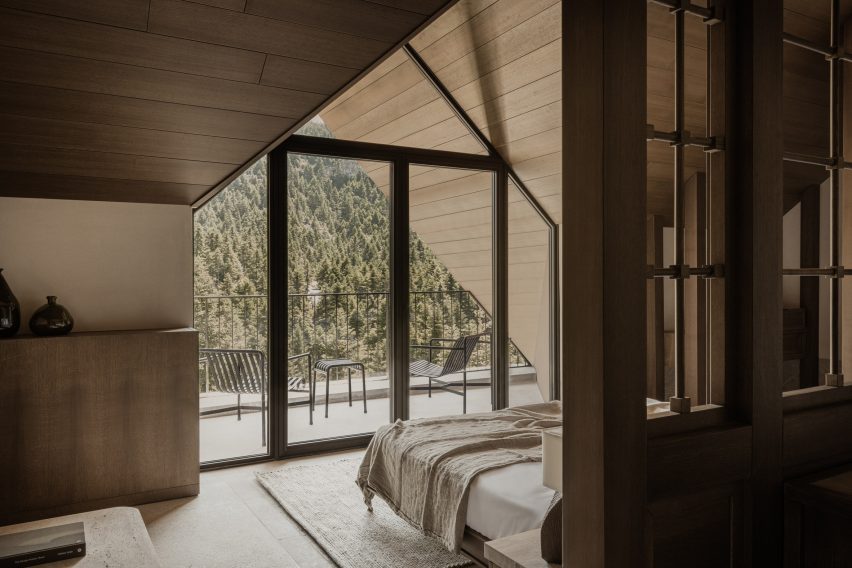
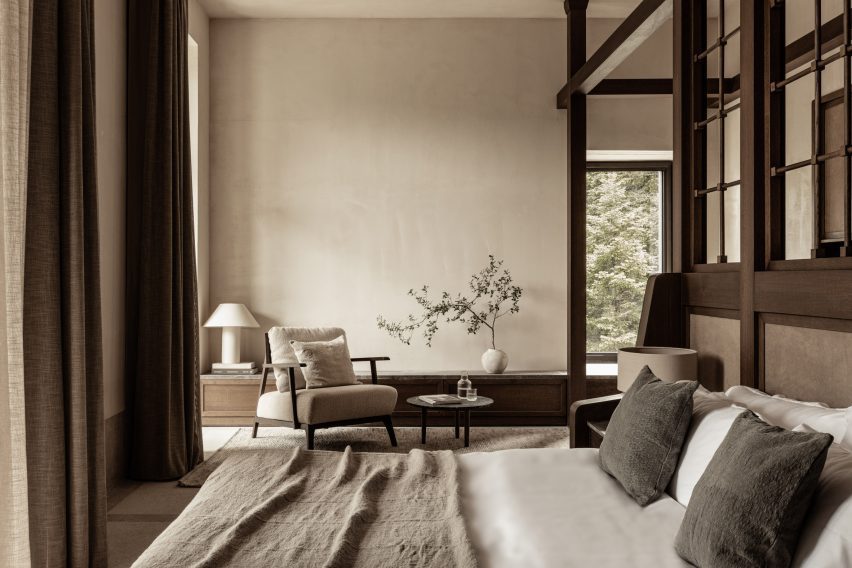
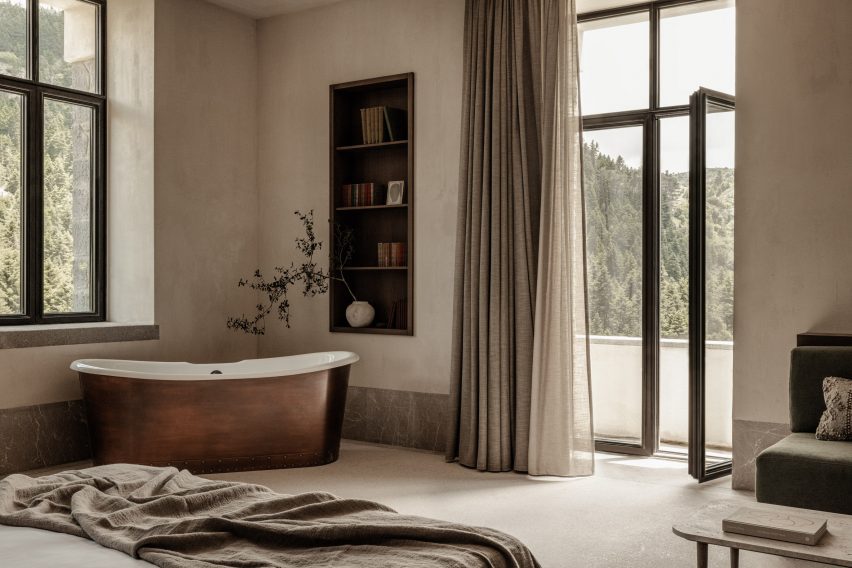
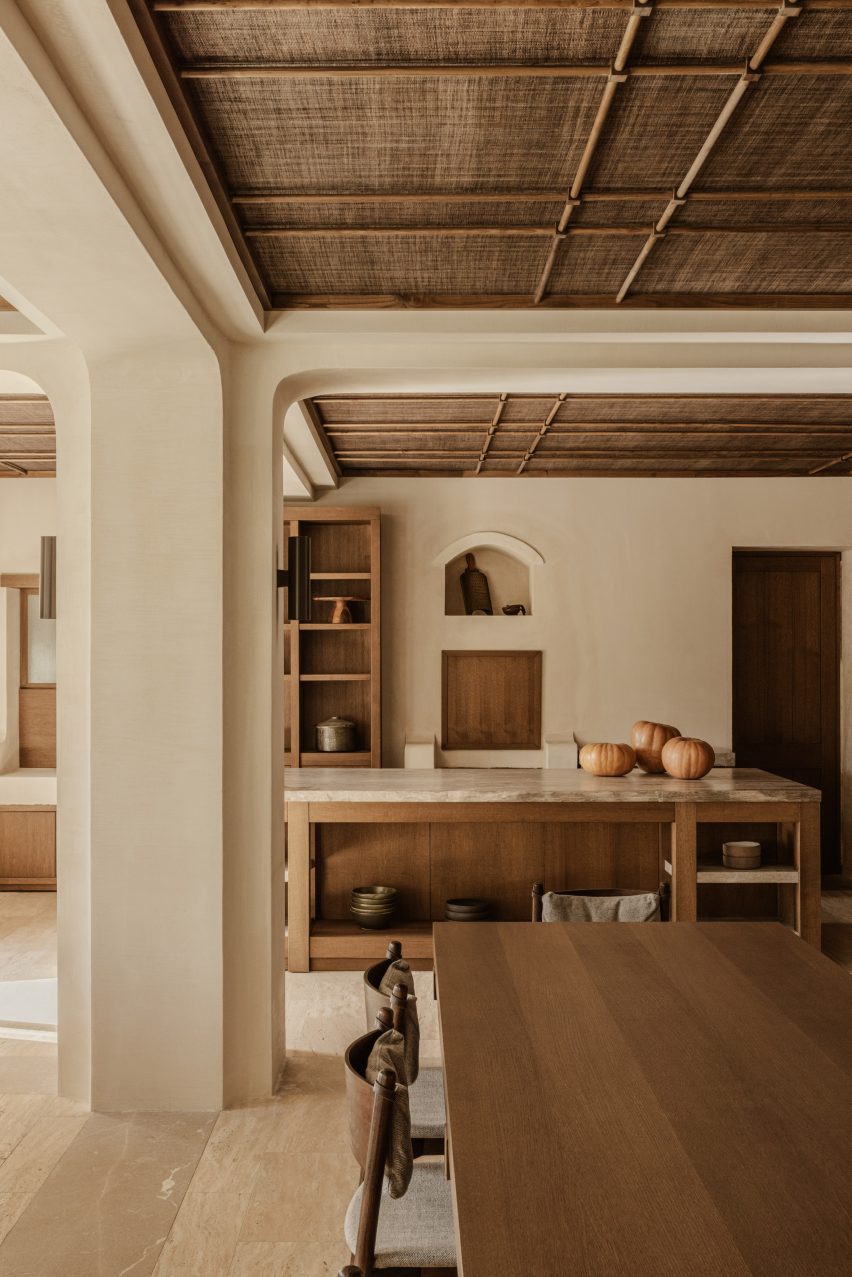
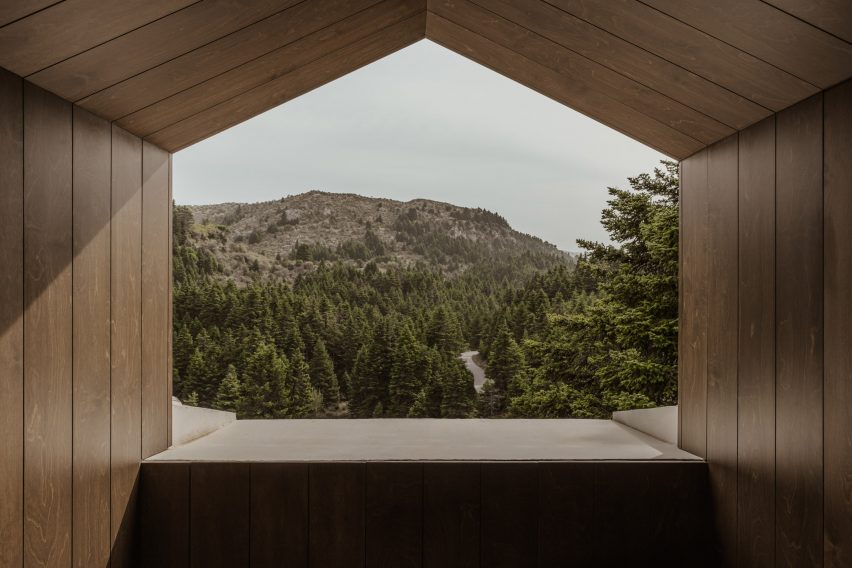




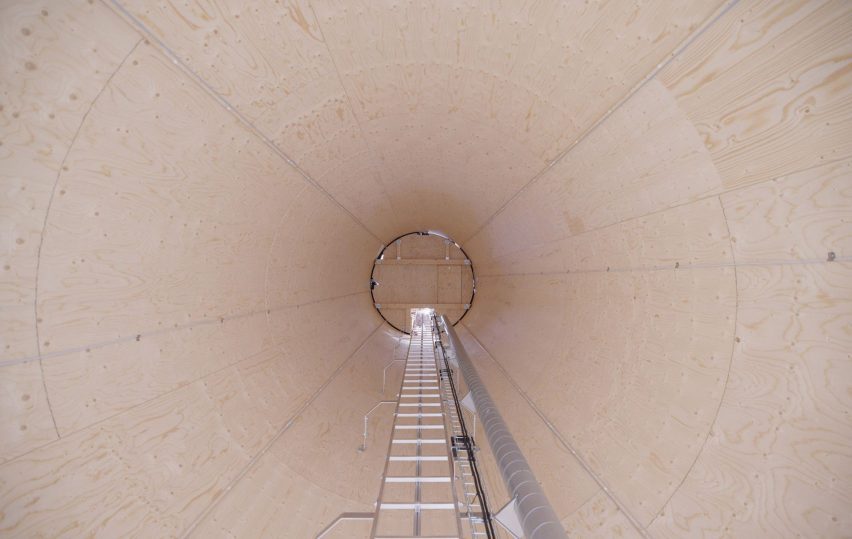
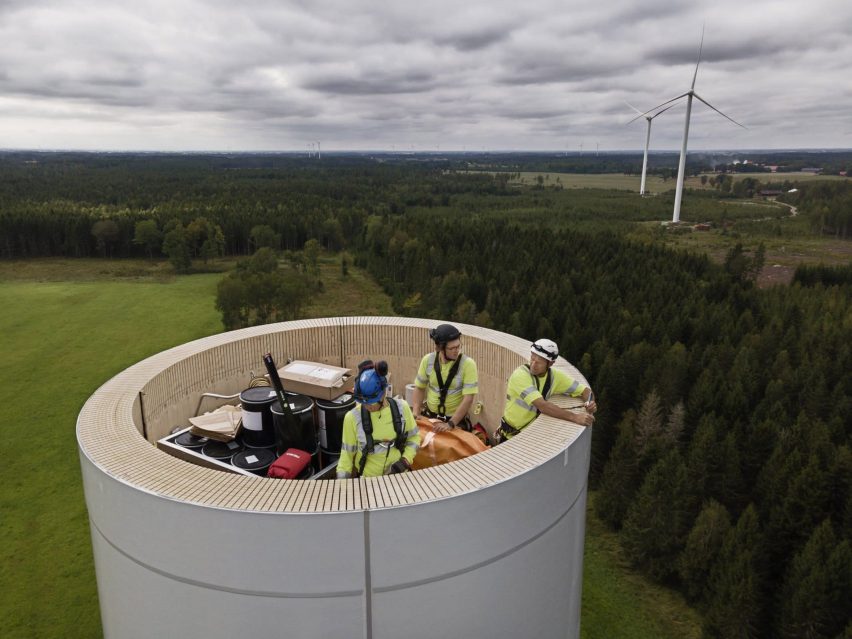
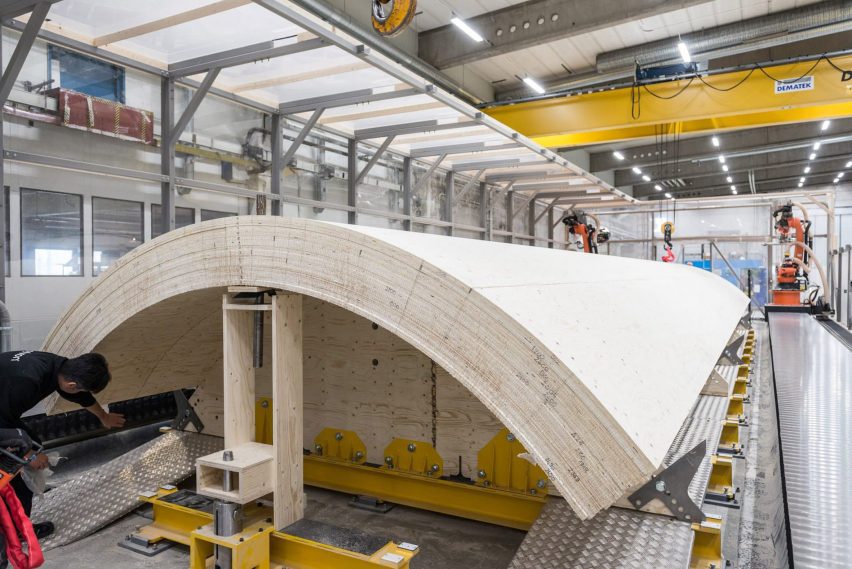
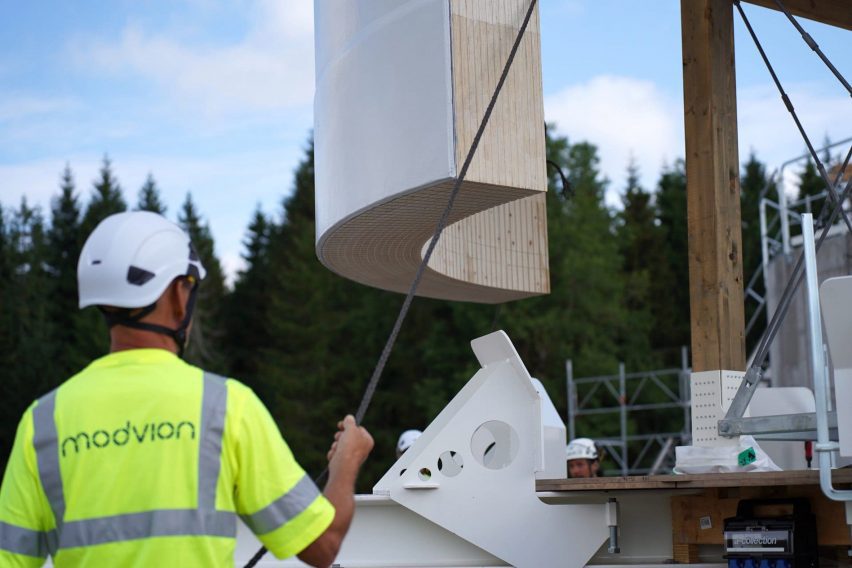
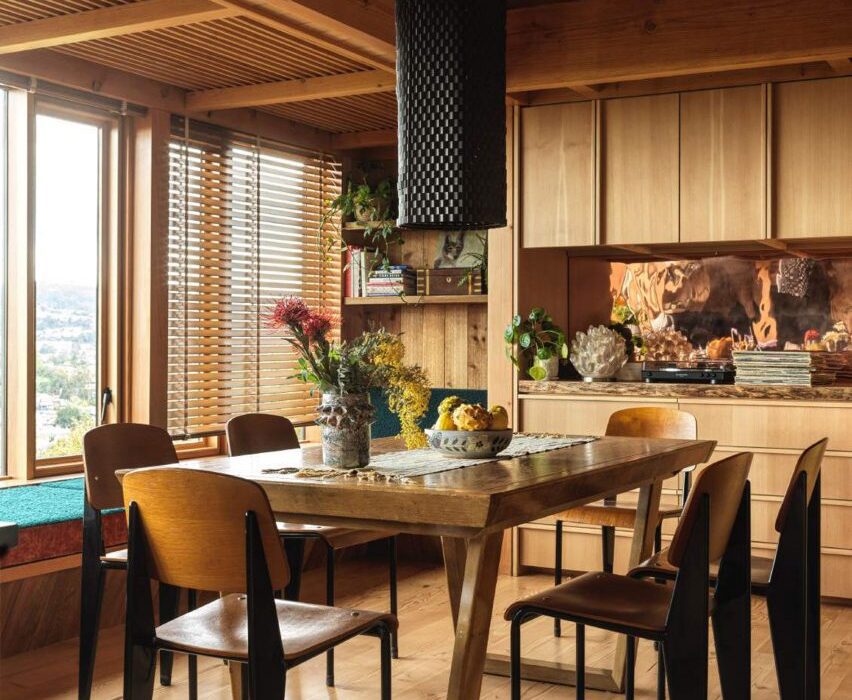
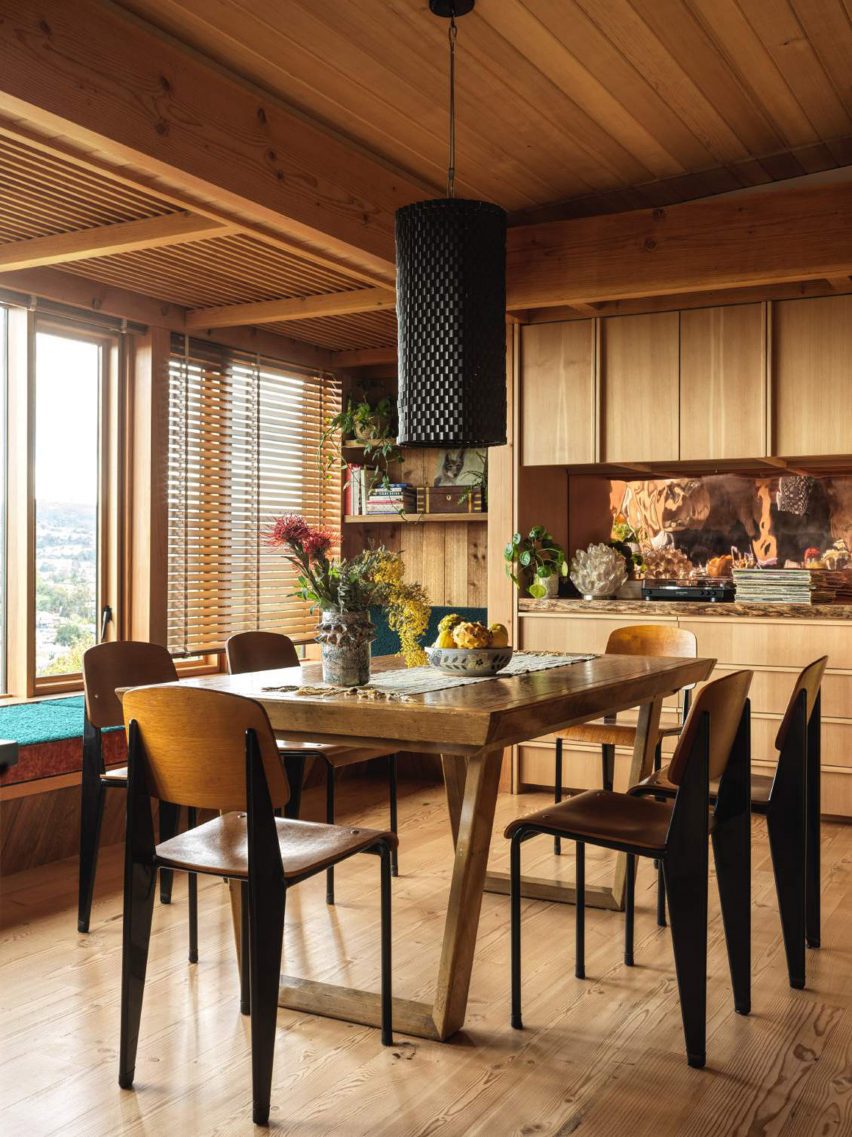
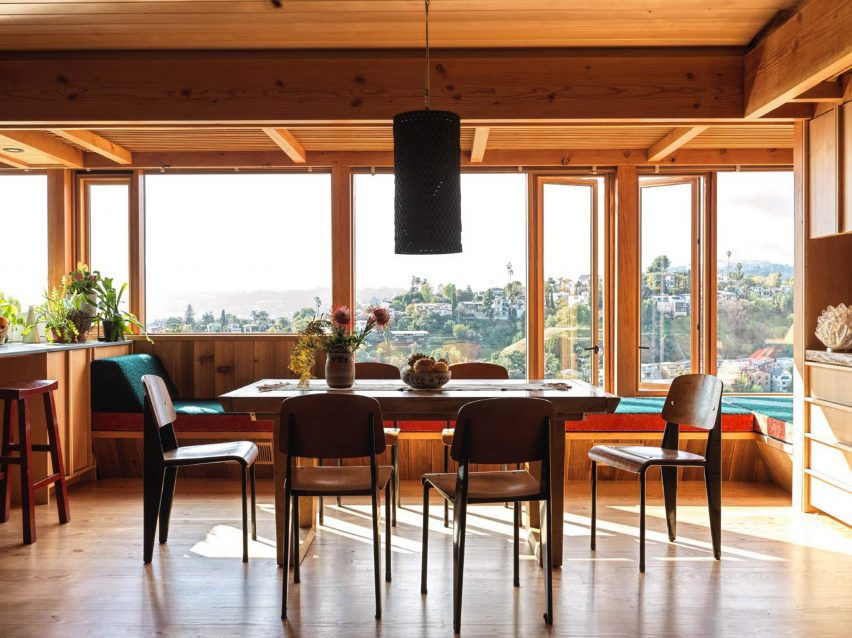
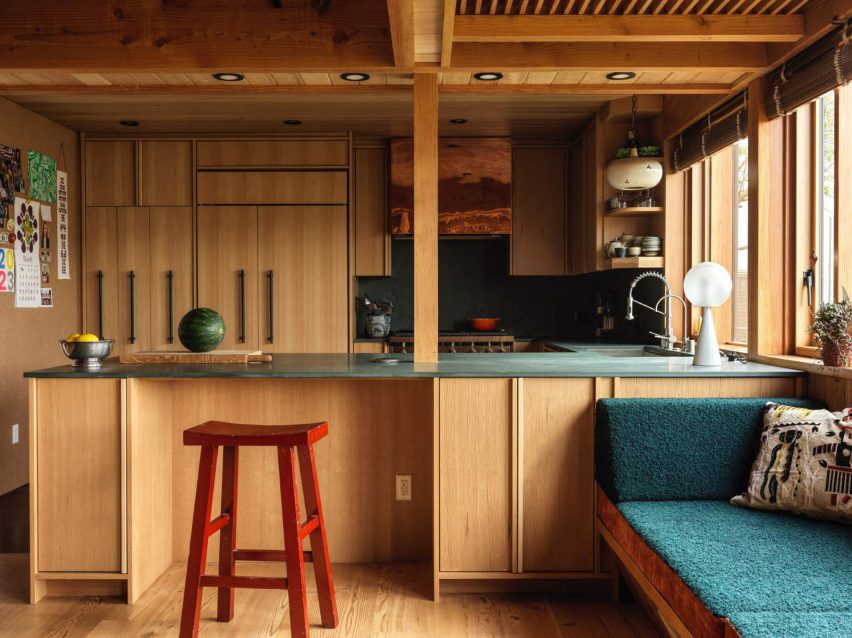
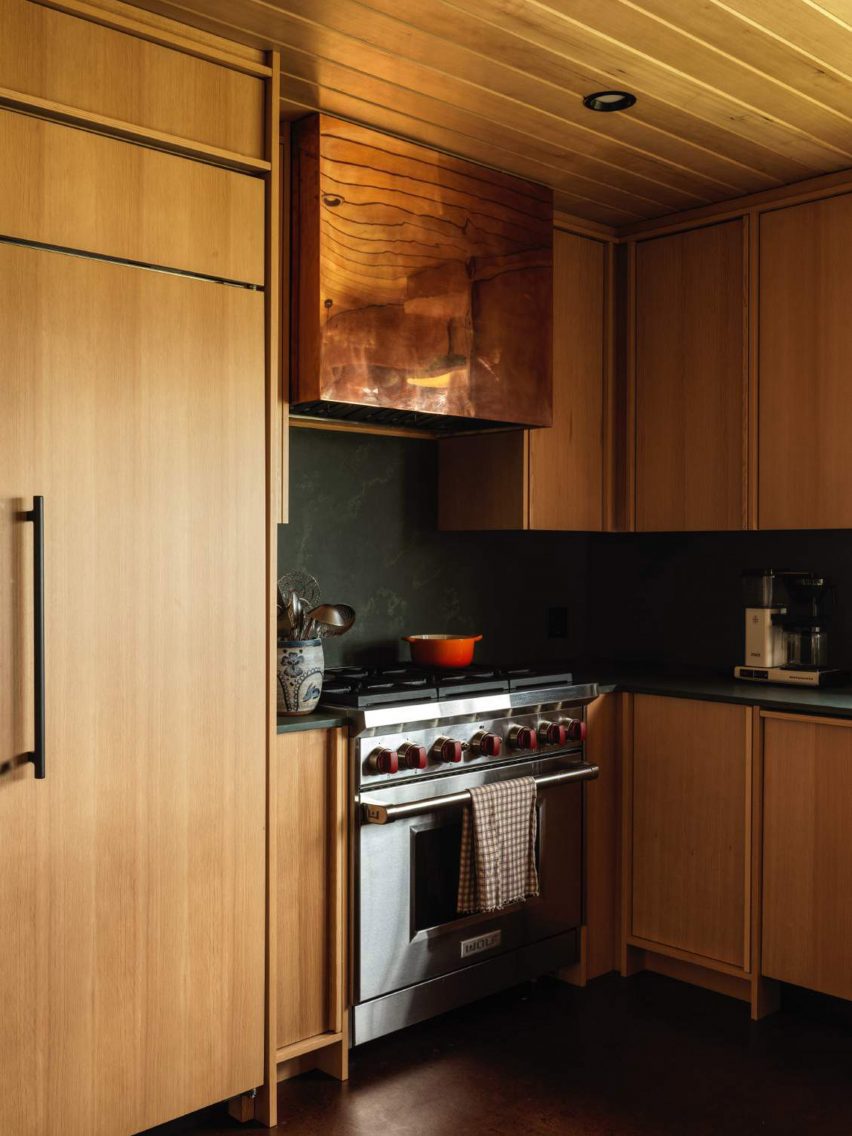
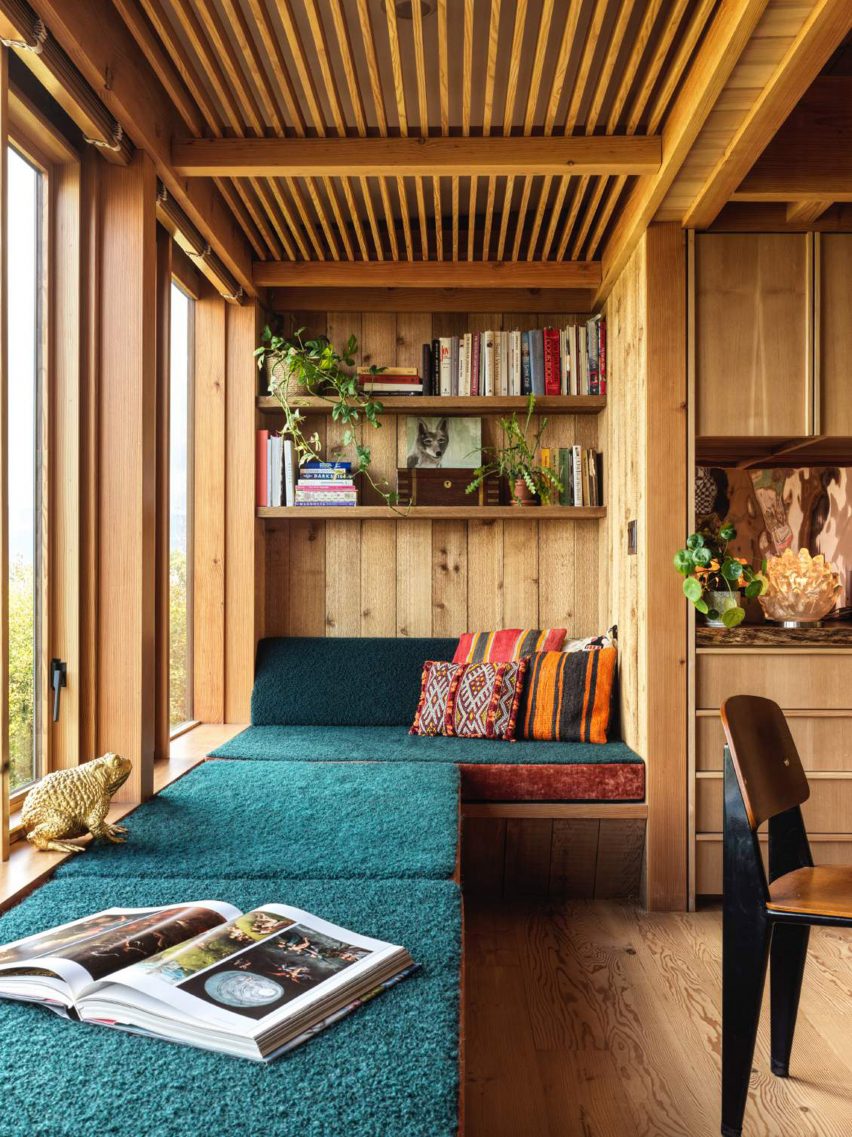
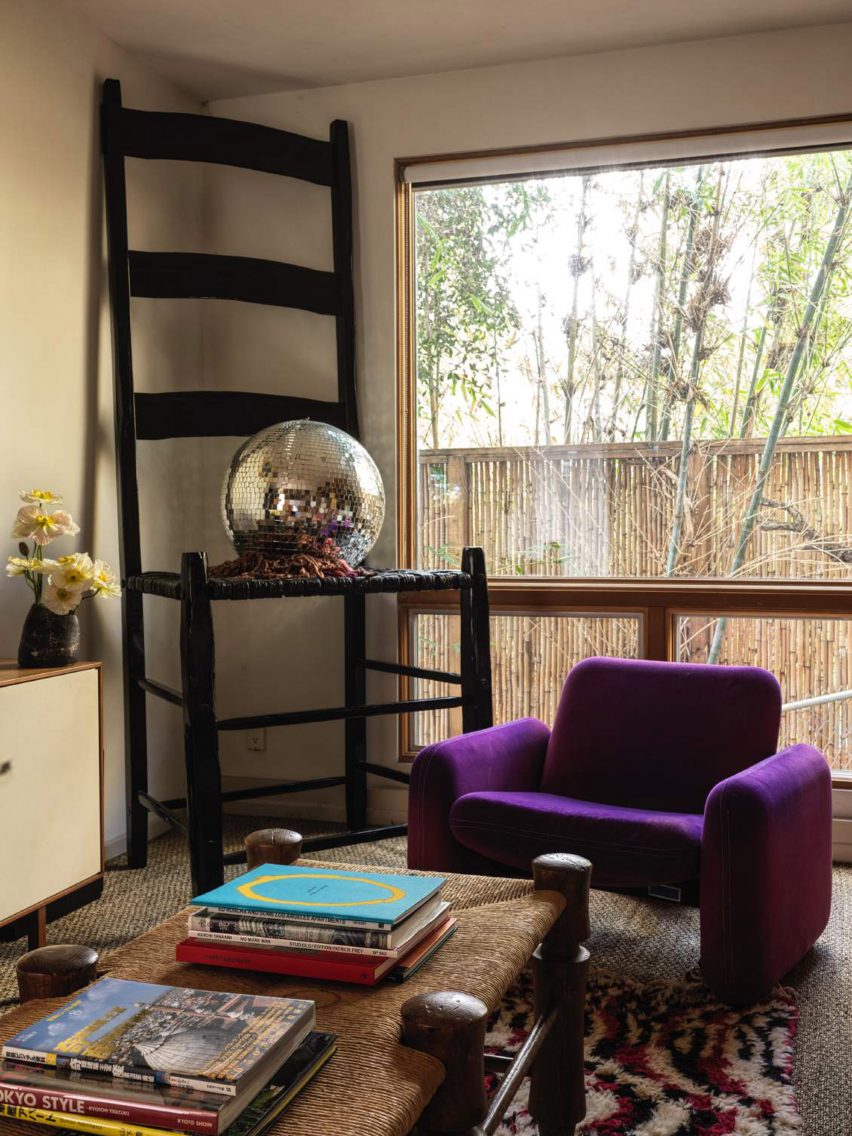


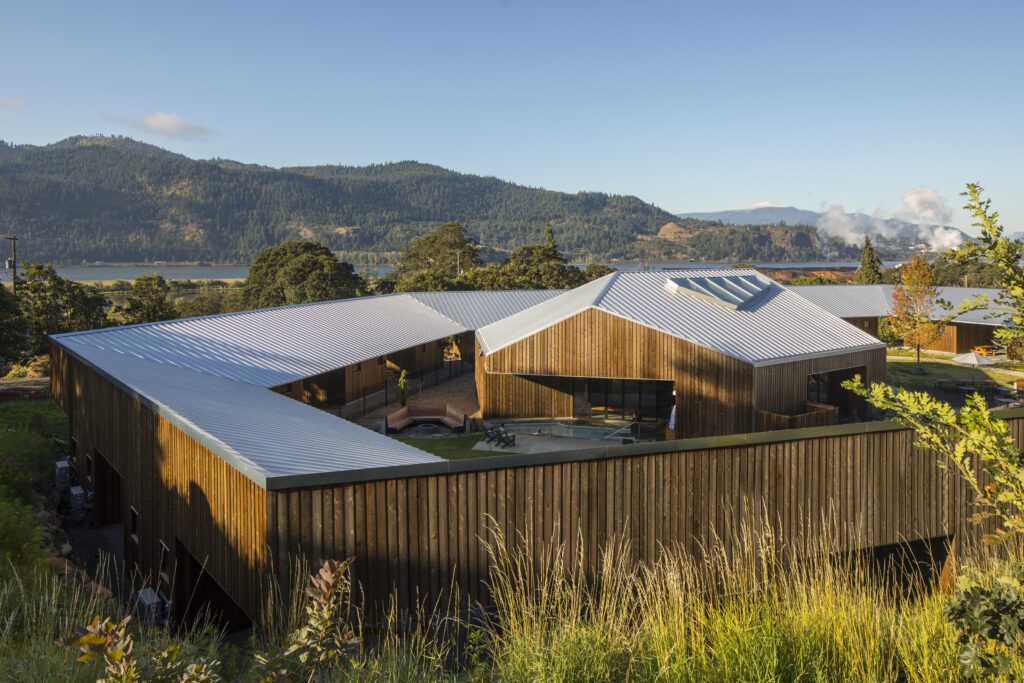
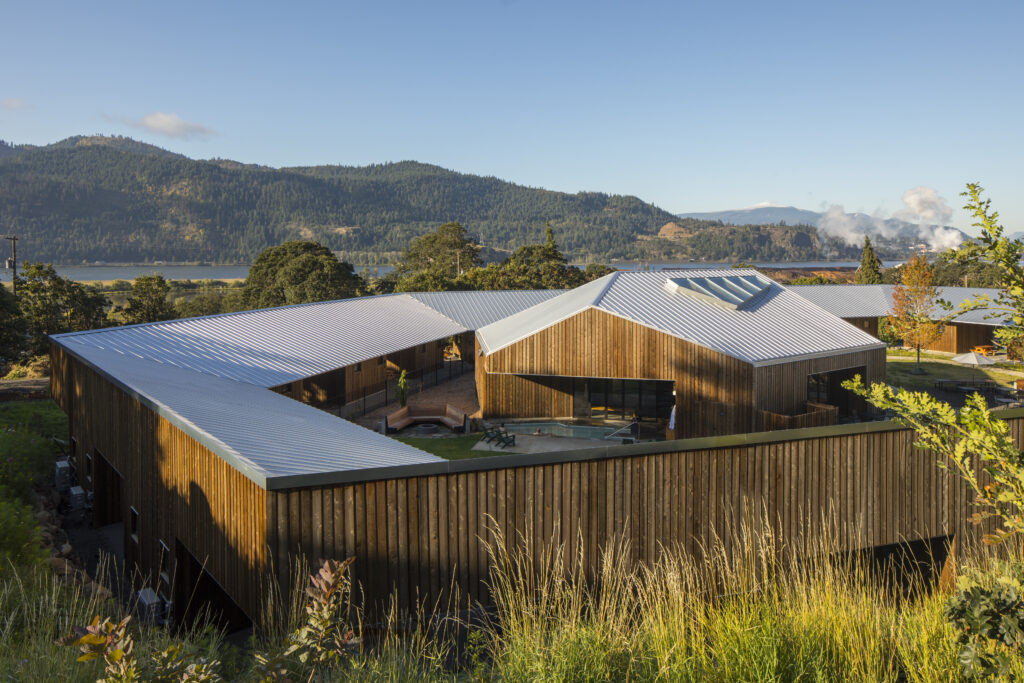 Designed by Oregon-based firm Waechter Architecture, this carefully crafted project involved the adaptive reuse of a historic school building into a boutique hotel, with the addition a ring of minimalist cedar cabins and a unique, polygonal bath house containing a series of relaxing pools, changing rooms, a sauna, a kitchen and two massage rooms.
Designed by Oregon-based firm Waechter Architecture, this carefully crafted project involved the adaptive reuse of a historic school building into a boutique hotel, with the addition a ring of minimalist cedar cabins and a unique, polygonal bath house containing a series of relaxing pools, changing rooms, a sauna, a kitchen and two massage rooms.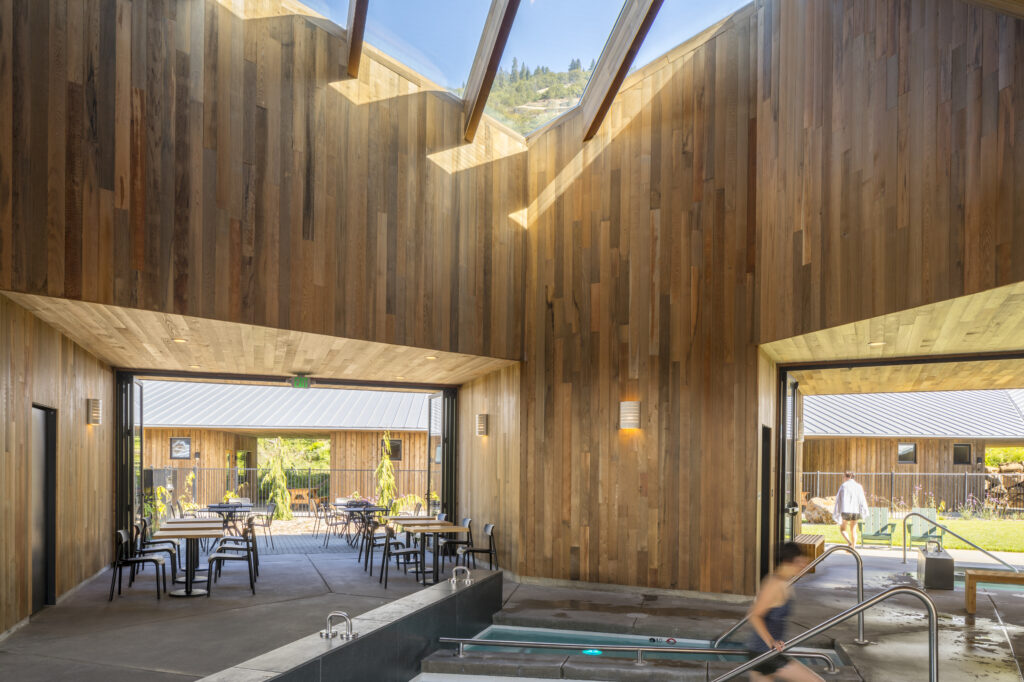 One of the most critical considerations for the spa’s design was how the interior and the exterior spaces could be seamlessly connected, providing shelter for visitors while also maintaining both a visual and a visceral connection with the hotel’s stunning natural surroundings.
One of the most critical considerations for the spa’s design was how the interior and the exterior spaces could be seamlessly connected, providing shelter for visitors while also maintaining both a visual and a visceral connection with the hotel’s stunning natural surroundings.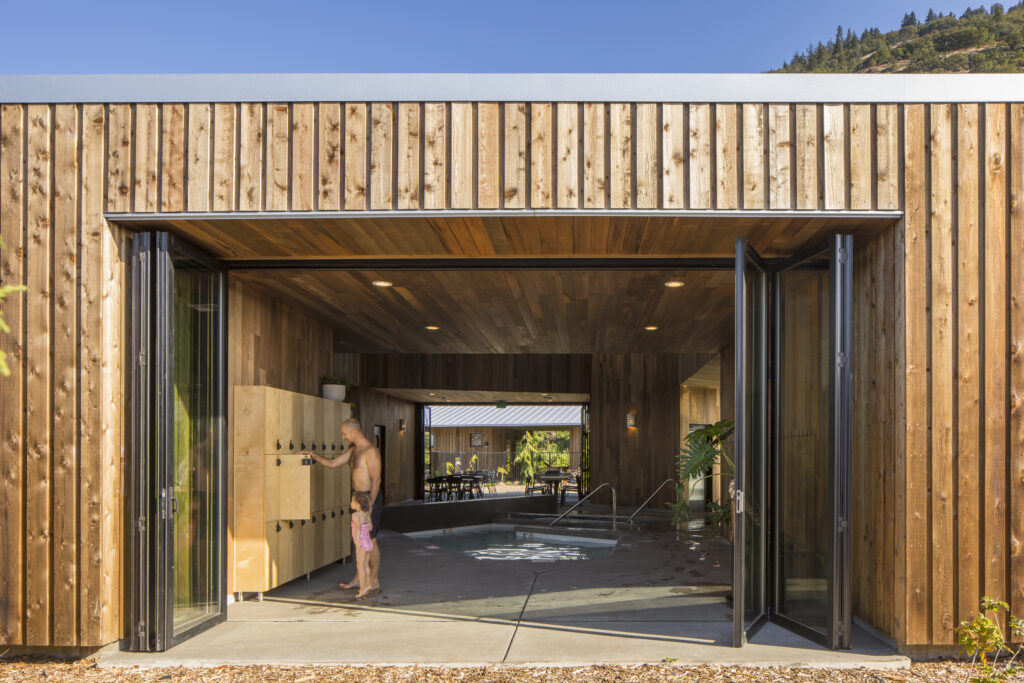 The use of LaCantina doors were key to the success of the project, as Waechter explained: “In many ways, these doors were the most important single component of the entire project. After seeing the system and learning about other successful installations in this dynamic context and climate, they seemed to be an ideal choice.”
The use of LaCantina doors were key to the success of the project, as Waechter explained: “In many ways, these doors were the most important single component of the entire project. After seeing the system and learning about other successful installations in this dynamic context and climate, they seemed to be an ideal choice.”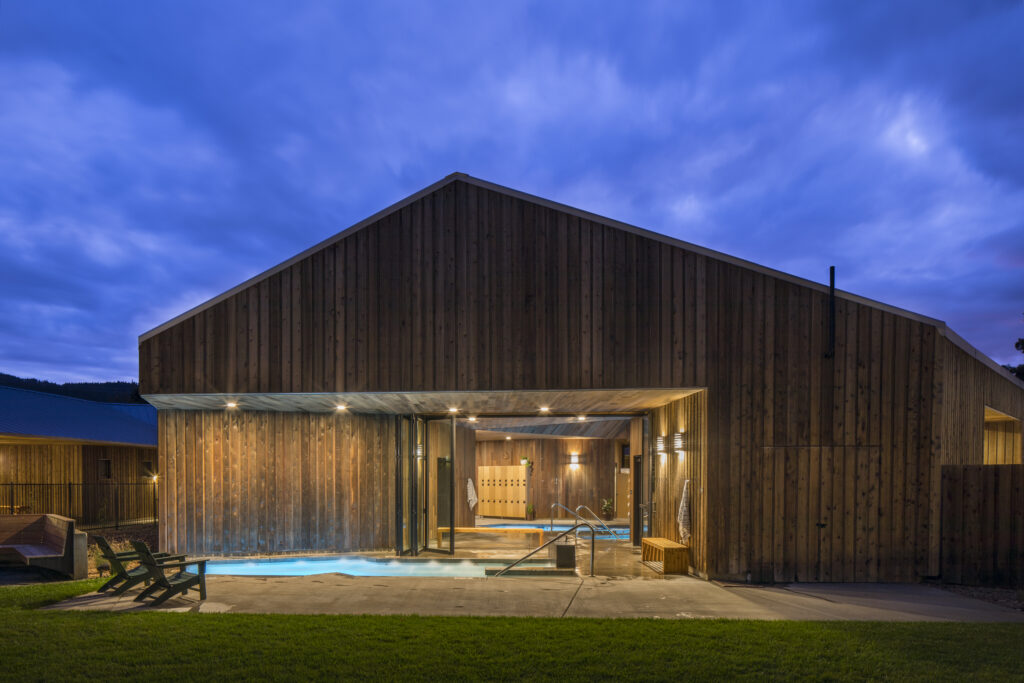 The finished project is an exemplar in adaptive reuse architecture and spa design, creating a perfect destination for those looking for a scenic getaway in the Pacific Northwest. As the architects concluded: “Through its composition and pairing of historic and new architecture, the Society serves as a model for how buildings can reconcile the needs of a sensitive site, visitors, and the local community, and maximize connection to the surrounding landscape.”
The finished project is an exemplar in adaptive reuse architecture and spa design, creating a perfect destination for those looking for a scenic getaway in the Pacific Northwest. As the architects concluded: “Through its composition and pairing of historic and new architecture, the Society serves as a model for how buildings can reconcile the needs of a sensitive site, visitors, and the local community, and maximize connection to the surrounding landscape.”